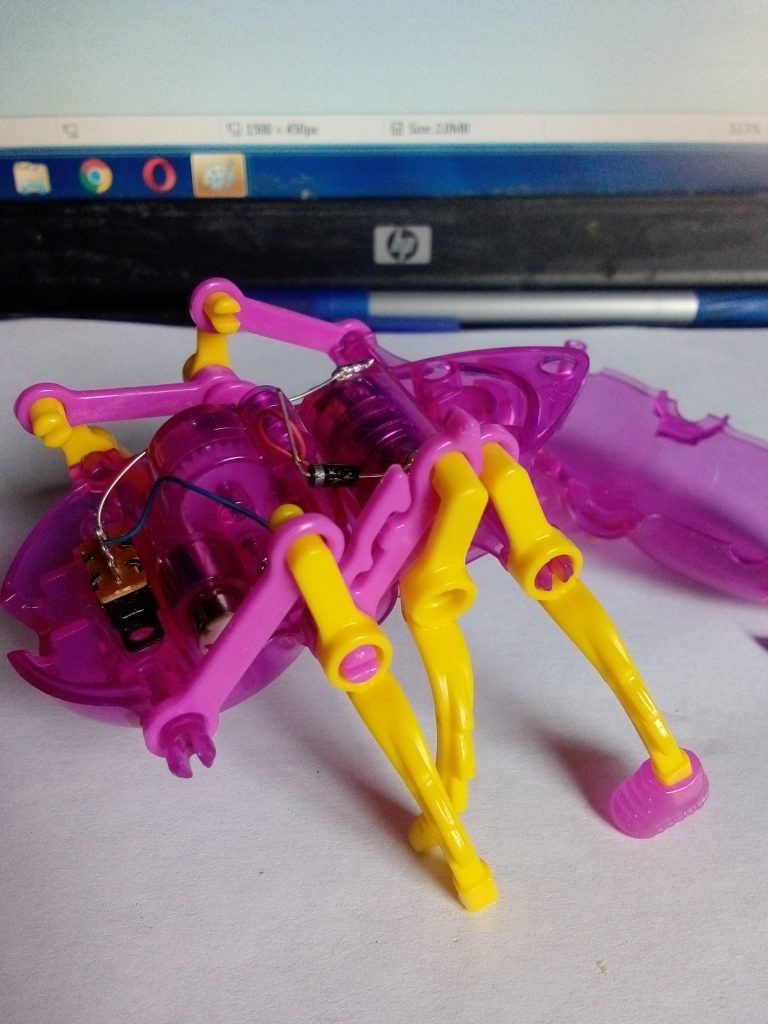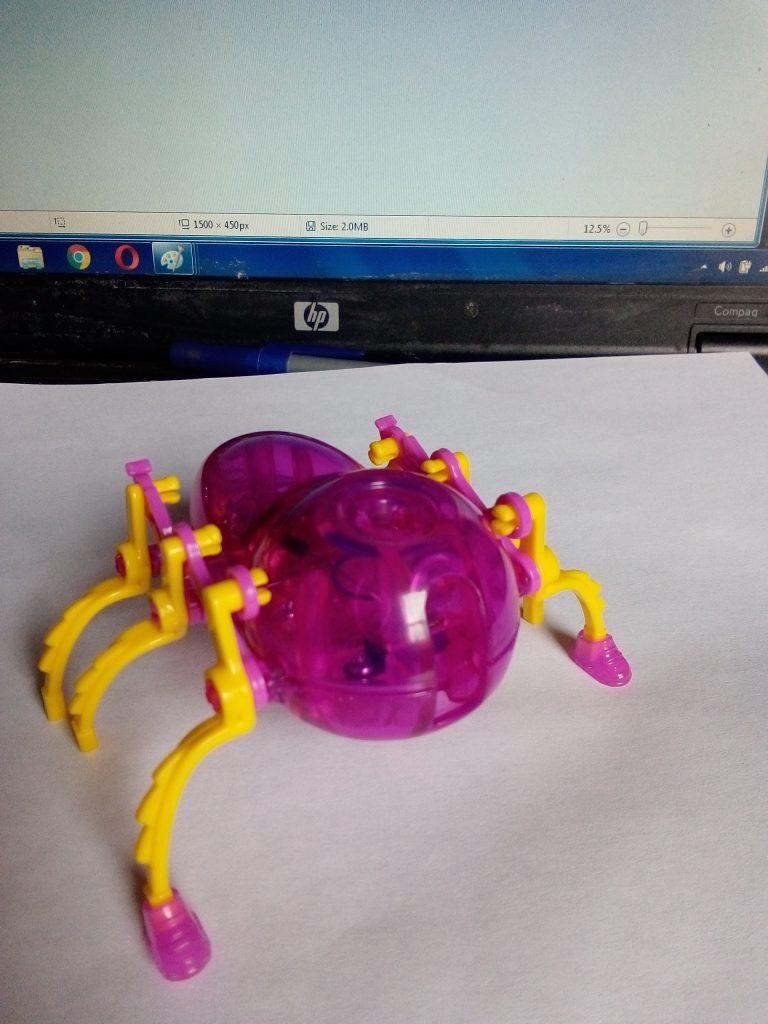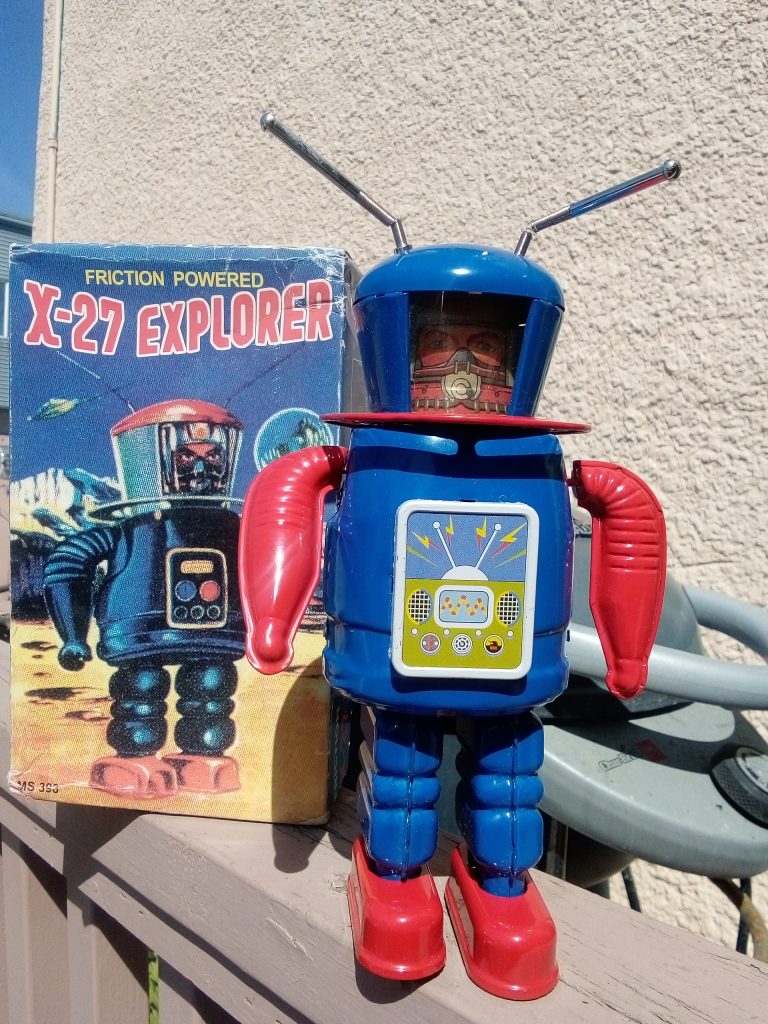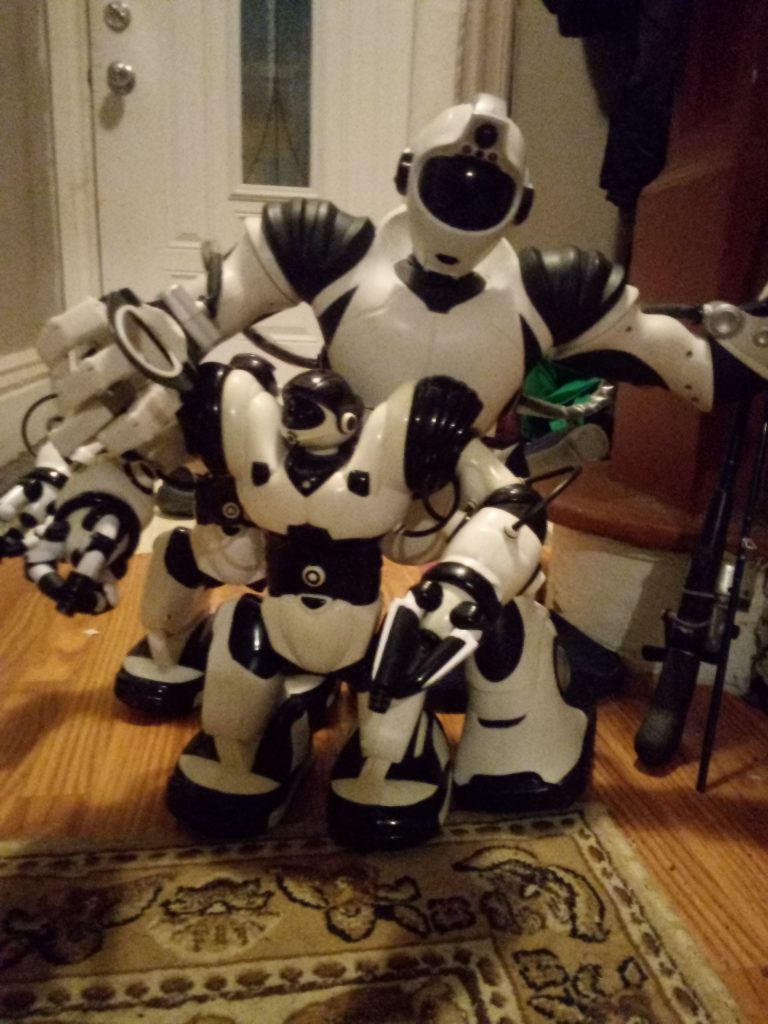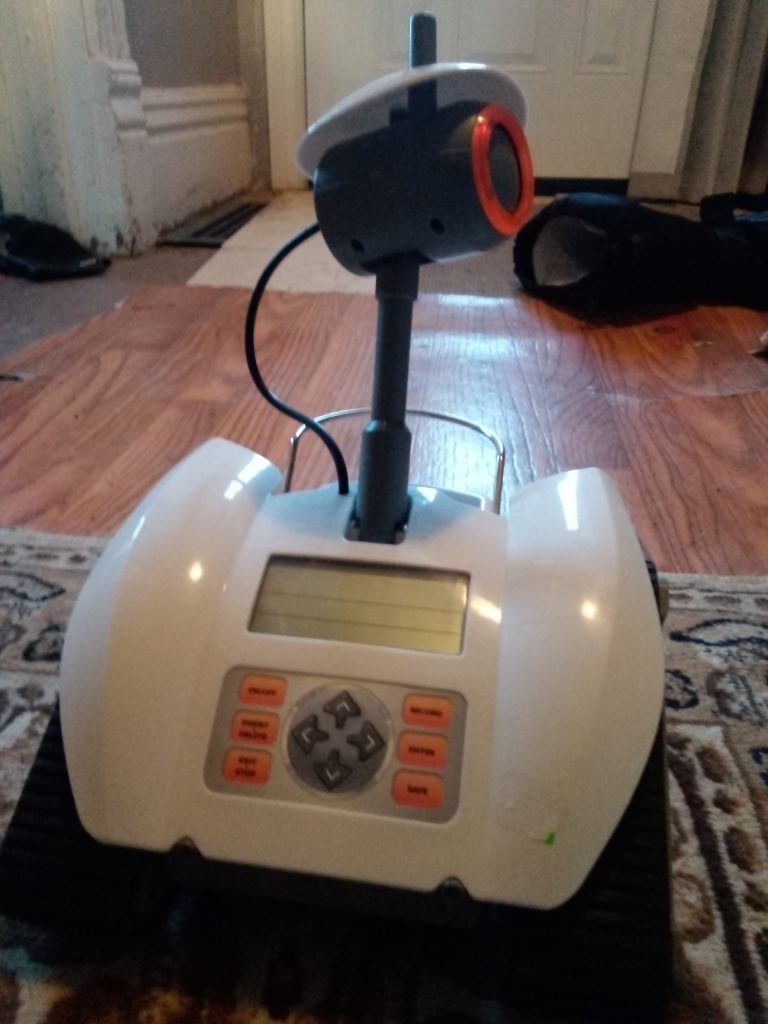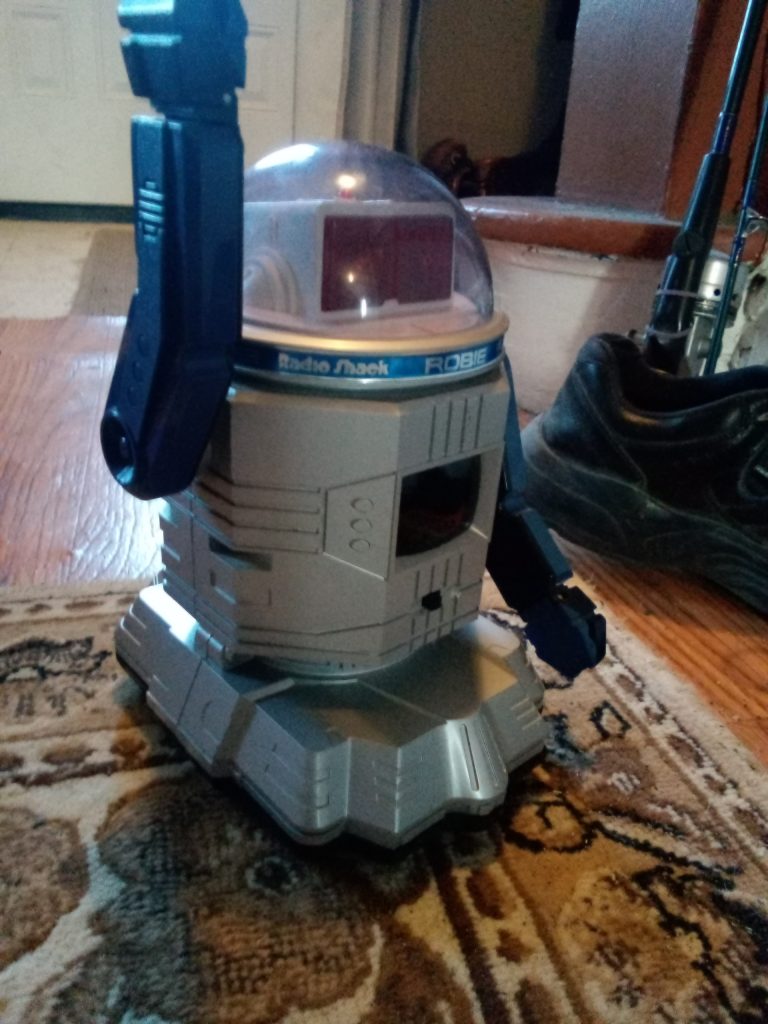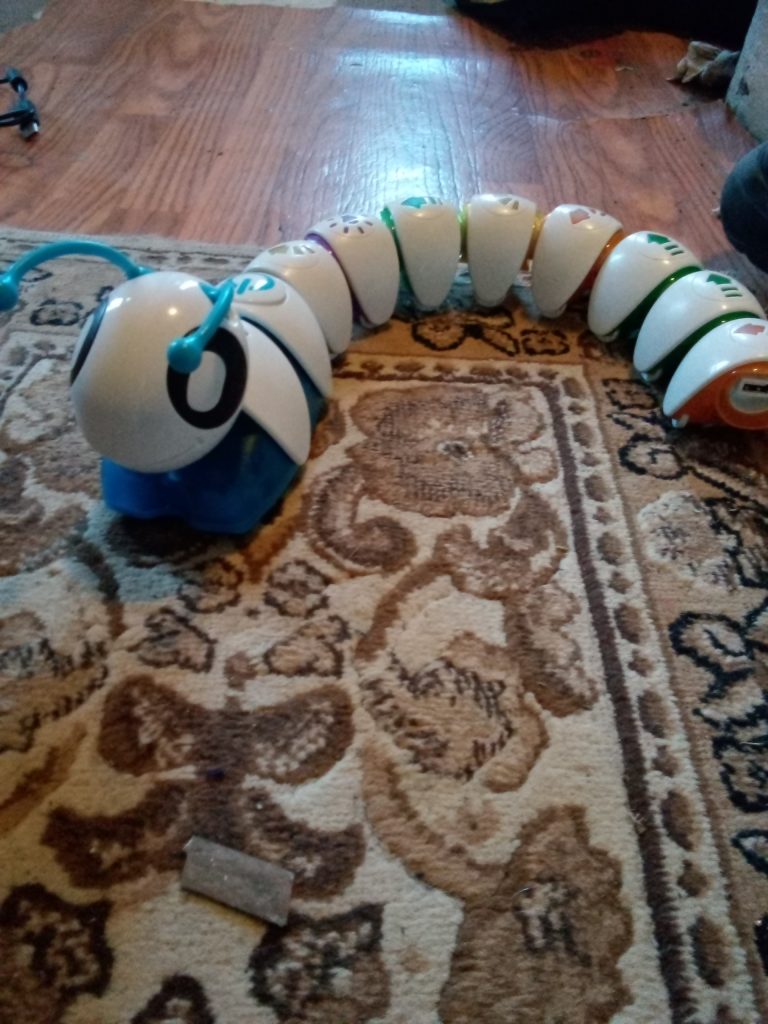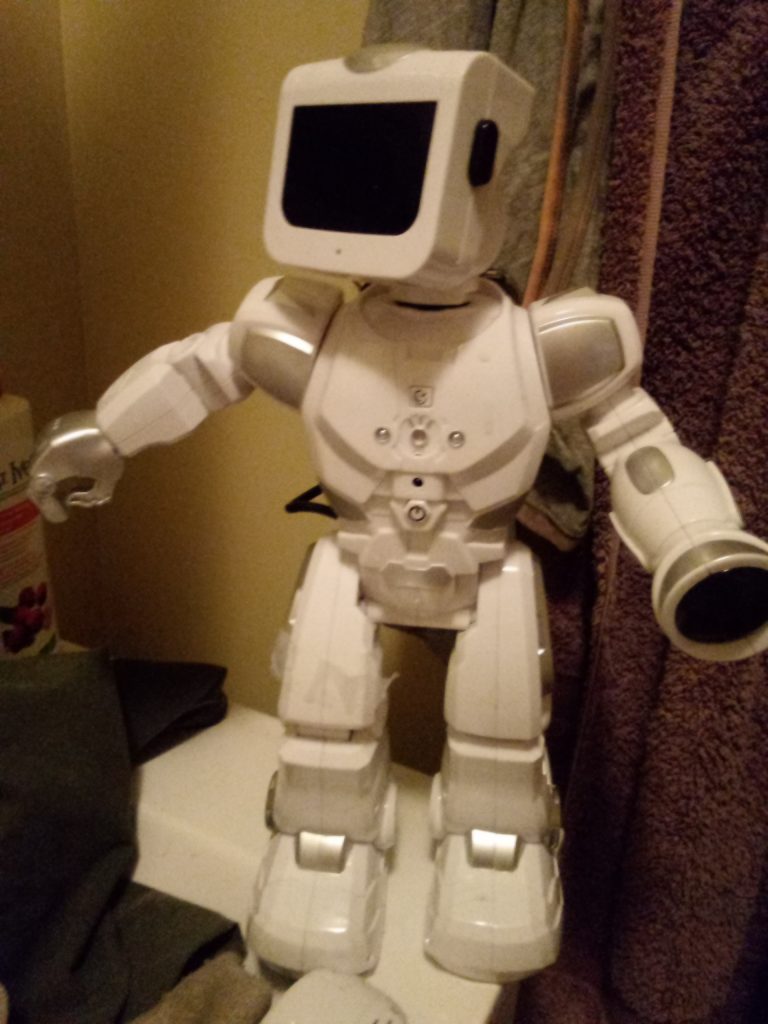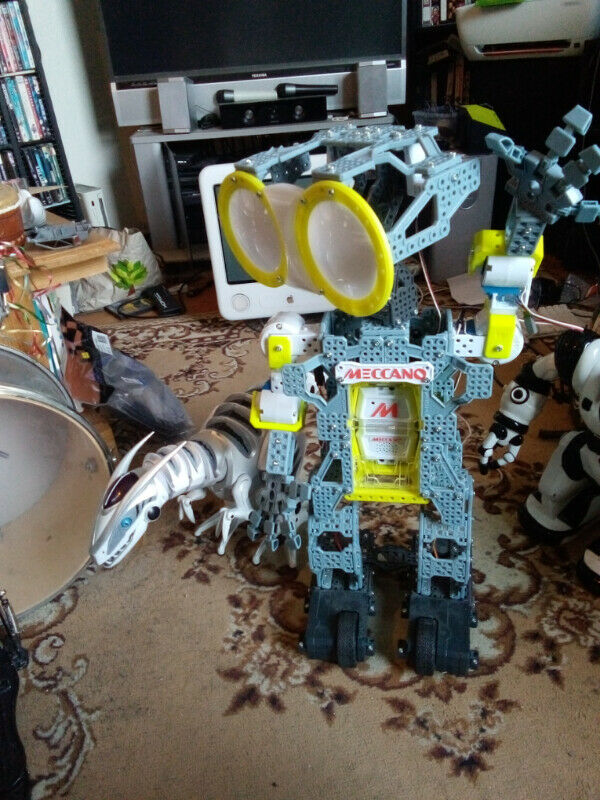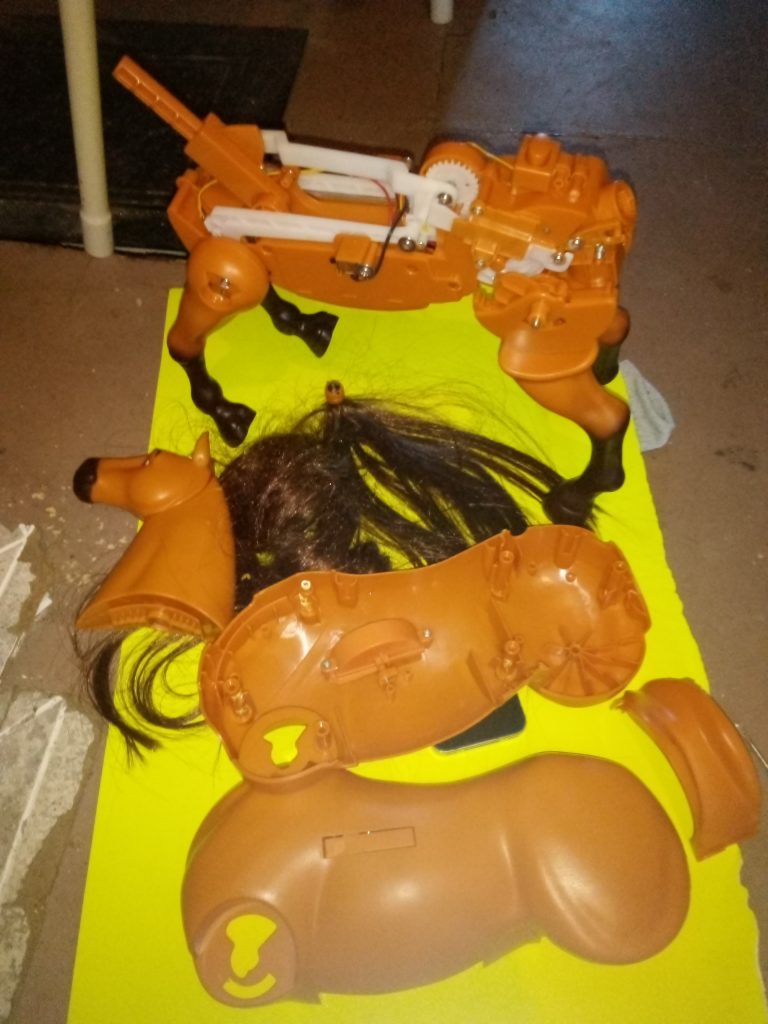Your robot project can get complicated in a hurry if you decide that you want it to move like a person or an animal and not simply to roll on wheels or on army like tank tread.
Even the Hanson Robotics company’s flagship robot named Sophia that has been on countless television interview shows in the last few years does not have legs but is rolled out on a movable platform.
So you could decide if you want to concentrate on making a robot look good or move well or do all of the above.
Your robot vacuum or ground robot may have a number of wheels or tank treads or may slither around like a snake while your humanoid robot may move on two legs or roll on a platform or balance on a one wheel gyro type unit.
Or maybe in the future we will have robots that will hover above the ground.
Now lets not forget your water based robots that may swim like a fish or mermaid or eel or maybe just crawl on the bottom of the lake or riverbed.
Of course we could even talk about super micro sized robots in the scientific area known as nanotechnology which can have cell sized robots move about in the human blood stream or at some smaller cellular level.
In this section we will talk about the movement of your robot and we will not deal with the brain power or the computer behind the movement or the sensors that make it avoid objects or not fall over etc.
So this area of movement is generally referred to as locomotion. How things move about.
So there is legged motion and non legged motion.
The reason you might want legs other than to look realistic is to maneuver better on uneven surfaces which is sometimes impossible with a simple wheeled device like an RC remote control car.
Two legged or bipedal robots fall easily so they must have multiple gyros sensors and tilt sensors and have the understanding of mechanics so that the arms will swing in the right way as the legs move to keep the robot upright.
But two legged robots are very hard to make without looking very mechanical and usually a cheap robot will look cheap as its hips sway back and forth as it moves looking like a 1950s Frankenstein movie.
But to move better on land one could go with more legs like tripeds or quadropeds. The Wowwee company had the Roboquad toy come out when the designer Mark Tilden used this design while working on a space rover at a previous job at the Jet Propulsion Lab.
But the simplest indoor or outdoor robot will usually have wheels like your typical RC car or tank.
Now a tank tread robot which is a form of the Slip/skid locomotion is moved by not conventional steering but by changing the speed of one side or the other of the tank. This very similar to operating a 2 wheeled robot vacuum where you do a similar thing and move one wheel forward while moving the other backward or not at all.
The other kinds of locomotion are wheeled (regular, omnidirection, castor and the swedish style of wheel), and legged (2, 4, 6 legs) and tank tread or some combination of the above.
There are many different types of wheels to use with a robot. There is an omni wheel which moves in several directions and a Hubee wheel where the servo is inside the wheel.
With legged motion there is talk about the particular style of walking or gait and balance and the appearance of it.
There is the term static versus dynamic movement and the idea that a 4 legged animal robot must have at least 2 legs on the ground at any one time unless it is jumping or something like that.
A two legged robot could stand on one foot if it is balanced correctly and the benefit of a legged robot is that it can conceivably walk upstairs or navigate rough terrain in many cases better than a wheeled robot….
Now you could go to legs or limbless motion and either move like a vehicle with wheels or tank treads or you could have your robot move like a snake and slither on the ground.
Walking is all about balance so one could look further into a branch of physics called statics or balancing forces to get more information on this.
The book by Daniele Benedettelli “Creating Cool Mindstorms NXT Robots” gives a real good history lesson with photos of the evolution of Mindstorm walking bipedal robots.
He says that there were 3 main bipedal walking evolutionary stages with the mindstorm starting with interlacing leg bipeds followed by jerky center of gravity bipedal walking and then smooth bipedal cog (center of gravity) walking.
He gives really good descriptions of how the legs must be set up and how gears should be assembled to get the best walking.
As a robot gets heavier it becomes more important to shift weight onto the leg on the ground and maintain balance.
If you don’t maintain the balance mechanically you need to add sensors like the accelerometers and tilt sensors also called gyroscopes. In the furby toy section we talk about and show the tilt sensor inside the toy and how it sometimes gets stuck with age preventing the Furby from talking or moving.
Now even though the robot is to move like a snake the robot usually has a series of special wheels that are designed with different levels of friction so that the robot can move forward on the ground and not fall backwards and still allow for a side to side motion.
Other than simply walking which is by no means simple, most robots have difficulty with many things like climbing and jumping and getting up when they fall.
Some of the most amazing youtube robot videos show a humanoid robot climbing up a ladder while others like the Boston Dynamicds site will show robots doing a backflip and dancing and being knocked over.
The Robosapien V2 is able to get up when it falls down and do it in a way which puts the least amount of stress on its plastic internal frame. It uses a number of springs to take the tension of certain body components but still on 25 year old Robosapiens you can see where the hip is cracked due to old age of the brittle plastic and the years of all that heavy weight taking its toll on the toy. Nothing lasts forever as they say.
Check out some of the youtube videos about Hollywood stunt person robots called stuntronics which are shown doing spectacular trapeeze circus acts flying through the air on ropes and doing triple flips into a net.
Now climbing a rope or a rock face is also extremely difficult for a robot as is hanging or crawing upside down.
You can see an amazing video of a TED talk presenter amputee who is able to climb sheer rock faces much better when he replaces his walking prosthetic feet with clawed feet which are able to grip rock crevices better while climbing.
So with robots you can put special grippers on 2 or 4 or 6 legs which can grip better or actually be controlled electrically to mold the gripper around certain objects with a bag of air or some substance.
Hanging upside down would be some combination of suction cups and a low weight load unless we are talking about robots used in space under zero gravity conditions or perhaps underwater.
Now lets turn our attention to simple vehicular motion with a wheeled frame.
There are several ways to accomplish turning.
Lets talk about a basic two wheel robot where the two wheels will each have motors and you may have a 3rd or 4th dummy wheel to keep it from falling to one side.
The simple way to move a two wheel device like a rolling beer cart or vacuum is either to use slip turns or spin turns.
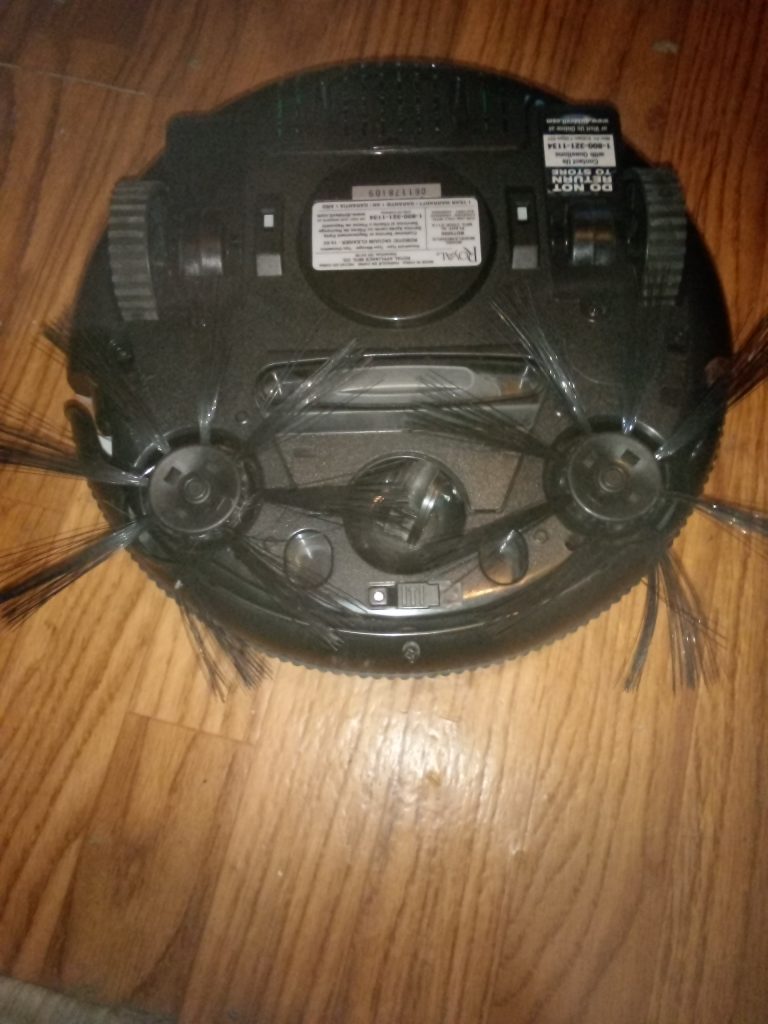
In a slip turn only one wheel will turn while the other one stops while in a spin turn both wheels are turning but in opposite directions.
A spin turn does a very tight circle upon itself. Slip turns are smoother.\
We could discuss wheel encoders as a way to test the speed of each wheel motor but we will do that some other time.
Its like with car technologies and the word differential. Because in a turn one wheel must travel farther than the other you need to adjust the speed of each wheel using a differential.
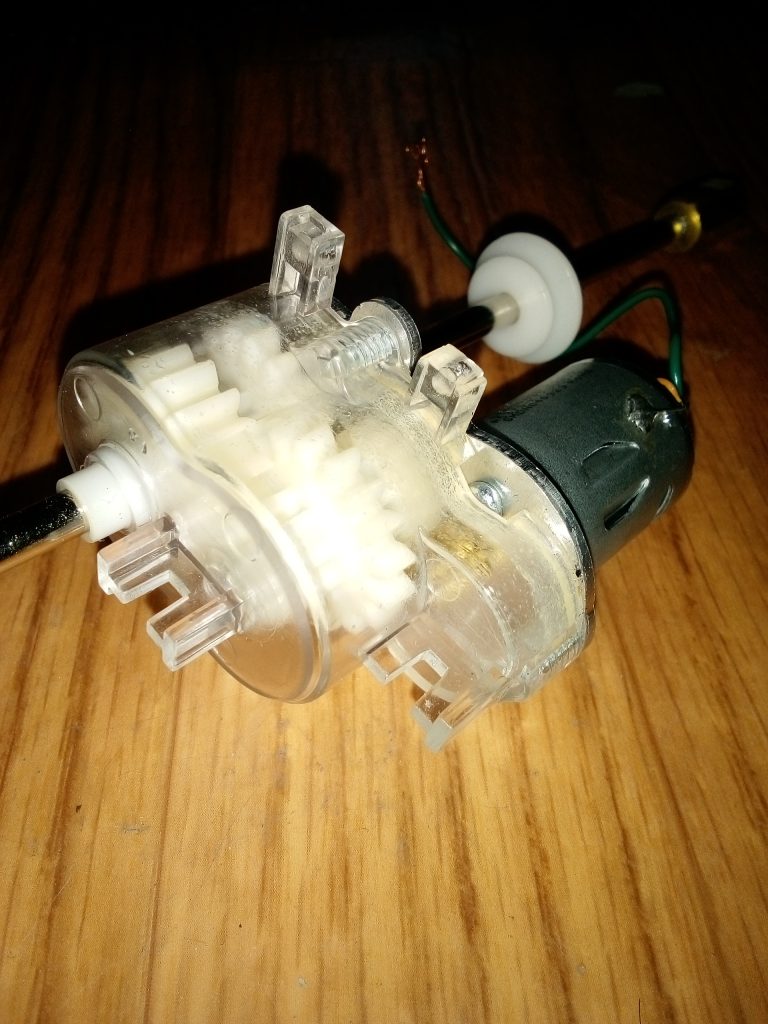
Actually in the Elon Musk Autobiography there is an excellent discussion of this and of course much more like lithium batteries.
